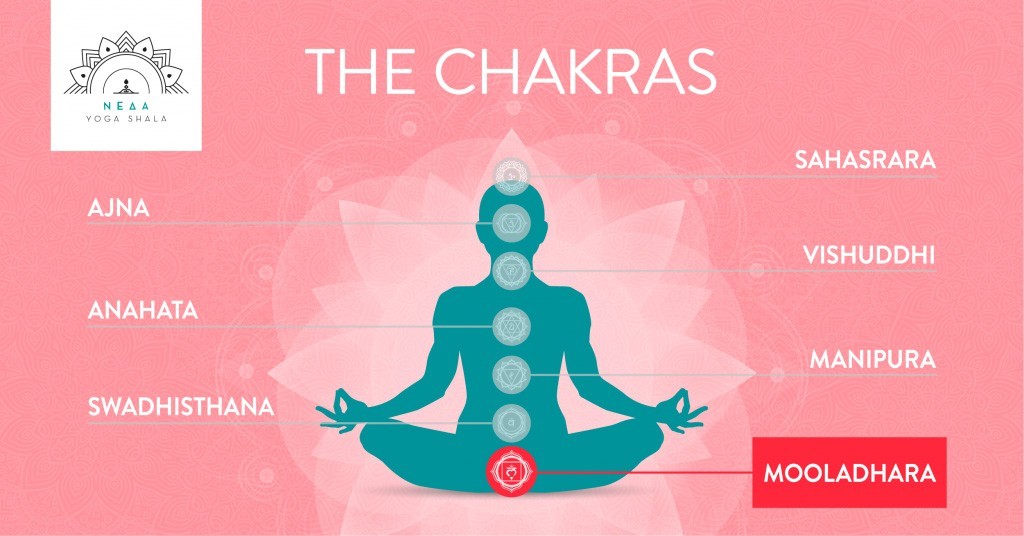
Mooladhara Chakra
“Moola” means root or foundation.
“Adhara” means space.
Where do I step?
Where do I stand?
What am I afraid of?
What makes me feel secure?
A square, as the most stable geometrical shape, is my compass.
That is what defines me as an entity and shows my coordinates of the present moment.
The science of the chakras is interpreted by the emotional image displayed by various sites on our bodies. If we bisect the spine, obviously we will not find any lotuses, colours or other symbols, but we will find neuron circuits that meet across the length of the spine, forming nodes at the same sites where the chakras are supposed to be. Every node corresponds and is connected to a specific gland that secretes hormones. Hormones that cause us to feel alertness, fear, calmness, joy etc. By balancing our feelings, observing our behaviour and transmuting it through various technics on the physical level, but also on the mental level with meditation and so on, we support a smoother energy flow through the nodes/vortexes/chakras.
The first energy center is called Mooladhara Chakra and is the center from where the human journey begins, that is, where the human being is "grounded" in his body. In this center, the main motivation is to ensure survival and achieve personal security (food, shelter, health, etc.).
The Mooladhara chakra invites us to experience the primal trust in Mother Earth, in creation, in nature, that is, in our Root. When we are connected to our roots, we can bear fruit and grow, just like plants. Then we can feel trust, stability and the power of our existence without tension or the need for material accumulation. The word Moola therefore refers to what constitutes "root" for us, whether it is the earth, our mother, our home, or whatever gives us a sense of stability and security.
Consequently, this chakra develops/is formed from when we are in the mother's womb and continues to be nourished greatly until the 1st year, as there the main concern of the human being is to satisfy his basic needs (without meaning, of course, that it is not influenced by subsequent events that may shake or strengthen our sense of security). Naturally, it depends a lot on our relationship with our mother. This will largely determine whether the person's subsequent behavior will be based on trust (if their first basic needs have been met and generously offered) or fear (if they have experienced abandonment, lack of care, abuse, illness, war, etc. as a baby). In the second case, the child may cultivate a deep feeling of existential fear, which if not worked on as they grow older, can become "engraved" in their nervous and endocrine systems and cause them to navigate life with fear instead of joy and with difficulty relaxing, letting go, and trusting.
People with a balanced Mooladhara Chakra are grounded and at the same time have a vibrant presence. They are not possessed by irrational fears and feel a deep sense of security that things will be okay. They have a healthy relationship with their body, home and basic needs, taking care of them without clinging to them.
As a traditional symbol, the lotus that represents the root centre has 4 petals which symbolize the four cardinal directions. Our compass. Just like the fixed geometrical square shape inside the lotus. This is the most stable geometrical shape, and for the same reason, it is also the symbol of the Prittvi Tattwa (the Earth element). Inside the square there is an inverted triangle, the symbol of Shakti kundalini. Above the triangle we find the Bija mantra, Lam, which harmonizes and balances it, when recited. Exactly under the square there is the elephant – one of the strongest terrestrial animals. Its seven trunks symbolize the 7 minerals necessary for the sustenance of life and bodily functions, and the message is that we do have what is necessary in order to live, but we should not become attached to it. The sense of smell is connected to the first energy centre, and it is sometimes referred to as “the sense of survival”.